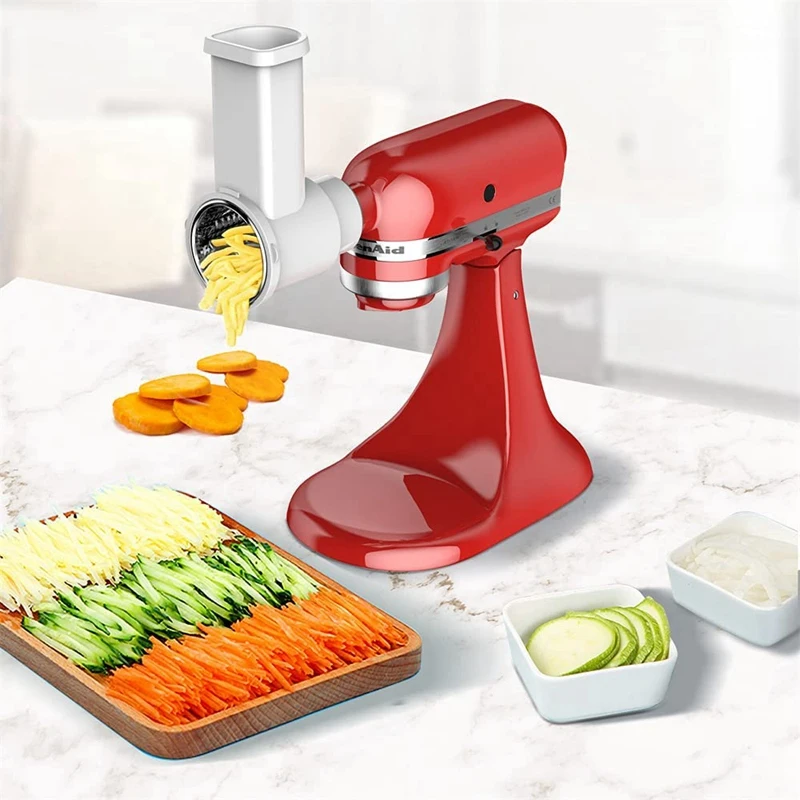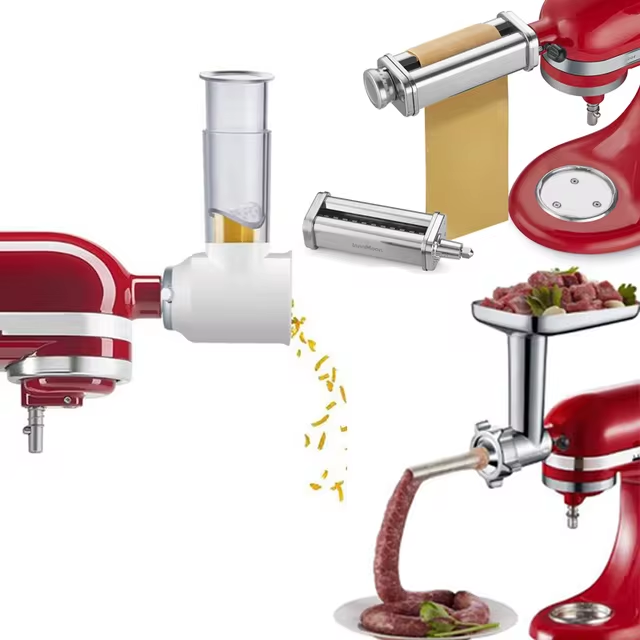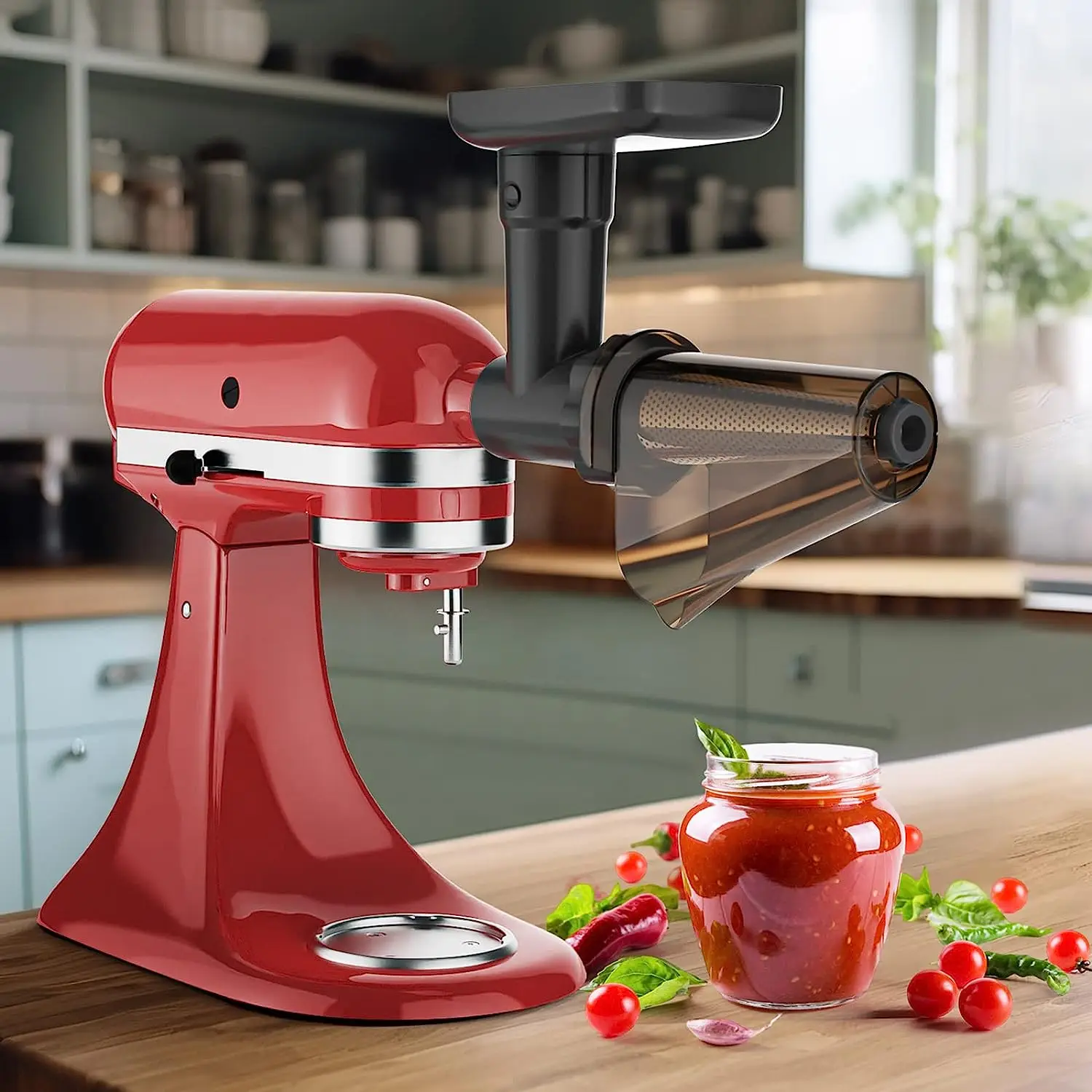
Unpacking and Assembling Your KitchenAid Food Processor
Unpacking your new KitchenAid food processor marks the start of an exciting culinary journey. But before you begin creating delicious meals and treats, it’s vital to understand and assemble your appliance correctly. This step will ensure that your food processor serves you well in all your cooking endeavors.

Exploring the Components
Once you’ve unboxed your KitchenAid food processor, take some time to familiarize yourself with each component. Typically, you’ll find the base unit, which houses the motor, a bowl with a matching lid, and a feed tube through which you can add ingredients. There are also various blades and discs for chopping, slicing, and shredding. Review the kitchenaid food processor instructions to get acquainted with each part and its function.
Step-by-Step Assembly Instructions
To assemble your KitchenAid food processor, follow these simple steps:
- Place the base unit on a stable, flat surface.
- Attach the bowl to the base by aligning it and twisting until it locks into place.
- Choose the blade or disc you need for your recipe and carefully set it onto the motor shaft inside the bowl.
- Fix the lid onto the top of the bowl, ensuring that it is securely locked – this is crucial for safety.
- Depending on your model, you may need to assemble the feed tube.
Double-check that each piece clicks into place and is stable. Incorrect assembly could lead to accidents or damage your food processor. If something doesn’t fit or you’re unsure about a step, consult the kitchenaid food processor instructions again. After assembly, your food processor is ready for use, promising a world of culinary exploration and efficiency in your kitchen tasks.
Getting Started with Your KitchenAid Food Processor
Once you’ve assembled your KitchenAid food processor, it’s time to get familiar with its features. Understanding how to control the device is key to making the most out of it.
Understanding the Control Settings
Your KitchenAid food processor comes with various settings that control speed and function. Look for a ‘Pulse’ button, a ‘Low’ speed setting for gentle tasks, and a ‘High’ speed for tougher jobs. Get comfy with these controls. They’ll guide you in preparing your food just right. Refer to the kitchenaid food processor instructions if needed.
Safety Tips Before Use
Safety comes first whenever you use kitchen appliances. Here are some quick tips:
- Check the assembly. Make sure every part is locked in place snugly.
- Lid on top. Never operate the food processor without its lid securely fastened.
- Use the feed tube. To add ingredients, always use the feed tube and the pusher. It keeps fingers safe.
- Start slow. Begin at a lower speed and gradually increase to avoid spills or mishaps.
- No metal utensils. Never insert metal spoons or forks into the food processor while it’s running.
These safety measures, along with the step-by-step assistance from kitchenaid food processor instructions, will set you up for many successful culinary adventures without any unwanted surprises.
Basic Operations of KitchenAid Food Processor
Getting to know the basic operations of your KitchenAid food processor can revolutionize your prep work. This machine is designed to be user-friendly, making a variety of tasks simpler and faster. Here’s how you can make the most of the various blades and settings it offers.
How to Use the Chopping/Mixing Blade
The chopping/mixing blade is the main tool you’ll probably use often. To use it, just fit it onto the motor shaft inside the bowl. Add your ingredients into the bowl, secure the lid, and choose your speed setting. The ‘Pulse’ function works great for coarse chopping, while continuous low speed suits fine chopping. Always start with a lower speed to manage consistency.
How to Use the Dough Blade
For homemade breads and pizza dough, the dough blade is your friend. Attach it like you would the chopping blade. Add ingredients as per your recipe. Use the ‘Low’ speed setting to mix and knead. The dough will start to form a ball and that’s when you know it’s done. Check the kitchenaid food processor instructions for dough-specific advice.
How to Use the Shredding and Slicing Discs
These discs make slicing vegetables and shredding cheese a breeze. There’s no need for manual grating. Snap the disc of your choice onto the shaft and feed your ingredients through the tube using the pusher. Use a steady speed for even results. Remember, the shredder is also perfect for coleslaw or preparing toppings. Try various thickness settings to suit your dish.
 Maintenance and Cleaning
Maintenance and Cleaning
Maintaining your KitchenAid food processor is key to its longevity and performance. Regular cleaning will ensure your food processor remains in top shape and safe for food preparation.
Daily Cleaning Tips
After each use, follow these simple daily cleaning steps:
- Turn off and unplug the food processor before cleaning.
- Remove the blades and attachments carefully, and wash them with warm, soapy water.
- Wipe down the base unit with a damp cloth. Keep water away from the motor area.
- Rinse the bowl and lid under running water. These can often go in the dishwasher if preferred.
- Dry all parts thoroughly before reassembling your food processor for the next use.
These steps, in line with the kitchenaid food processor instructions, can prevent food buildup and potential bacterial growth.
Deep Cleaning Guide
Deep cleaning your KitchenAid food processor should happen periodically, especially when working with sticky or dense ingredients. Here’s how to deep clean your appliance:
- Disassemble all removable parts including the bowl, lid, blades, and discs.
- Soak tough residues in warm, soapy water before scrubbing gently with a cleaning brush.
- Inspect the seals and gaskets for any food particles that could impair the seal.
- Check the feed tube and pusher for any leftovers that might have been missed.
- Use a mild detergent and avoid abrasive cleaners that can damage the surfaces.
- Let all parts air dry completely before putting your food processor back together.
Consult the kitchenaid food processor instructions regularly to ensure you’re cleaning the appliance as recommended by the manufacturer.
Troubleshooting Common Issues
It’s normal to encounter minor issues while using your KitchenAid food processor. Knowing how to troubleshoot common problems can save you time and prevent unnecessary stress.
What to Do If Your Food Processor Won’t Start
If your KitchenAid food processor isn’t starting, here are some steps to follow:
- Ensure it’s plugged in. Check your power outlet and the food processor’s plug.
- Check the assembly. Improper assembly can prevent startup. Refer to kitchenaid food processor instructions for correct placement.
- Inspect the bowl and lid. These must be securely locked for the unit to operate.
- Verify safety features. Some models have a safety lock that must be engaged.
- Reset or try a different outlet. Sometimes, resetting the circuit or trying another power outlet can fix the issue.
How to Handle Operational Glitches
When faced with operational glitches:
- Look for obstructions. Remove any food that may be blocking the blade or the feed tube.
- Check the motor. If it sounds labored or strange, turn it off immediately and check for any jamming.
- Clean it out. After long use, food residue can affect performance. Clean according to the daily steps in kitchenaid food processor instructions.
- Cool down the motor. If the food processor has been running for a prolonged period, let it rest to avoid overheating.
- Review the user manual. Some glitches are unique to certain models; your kitchenaid food processor instructions may have specific tips.
Advanced Techniques and Tips
Maximizing your KitchenAid food processor requires knowing some advanced techniques. These can turn simple dish prep into a gourmet experience. Use the processor’s power for more than just chopping and slicing.
Preparing Emulsions and Purees
Your KitchenAid is perfect for smooth emulsions and velvety purees. Start by placing liquids first, then add solids. For dressings, have oil meet vinegar and herbs in the processor. The ‘Low’ setting works magic for a steady mix. Quick pulses create thicker emulsions—ideal for mayos or aiolis. For purees like hummus or baby food, use a higher speed. Scraping down the sides ensures an even texture. Follow the kitchenaid food processor instructions for safety and perfect results.
Tips for Grating Cheeses and Spices
Grating cheeses and spices is easy with the right disc. For hard cheeses, chill them first. This makes grating cleaner and easier. Choose the fine shredding disc for a light sprinkle of cheese. The coarse one suits a heavier topping need. When grating spices, ensure they are dry. To avoid waste, use the pulse feature. This prevents over-processing. Always clean the food processor after grating strong flavors. It keeps tastes distinct and your appliance fresh. Check the kitchenaid food processor instructions to match the right disc to your task.
 Additional Attachments and Accessories
Additional Attachments and Accessories
Your KitchenAid food processor is versatile. You can enhance its functionality with a variety of attachments and accessories.
Exploring Additional Accessories
Some extra accessories are:
- Citrus Press: Make fresh juices quickly.
- Julienne Disc: Create uniform vegetable strips easily.
- Egg Whip: Whips eggs or cream smoothly.
To find the right accessory, consult the kitchenaid food processor instructions. Always use genuine KitchenAid accessories for best results and safety.
Creative Uses for Various Attachments
Attachments bring a new level of culinary creativity:
- The Julienne Disc is perfect for garnishes or stir-fry.
- Use the Citrus Press to add fresh juice to marinades.
- The Egg Whip prepares fluffy omelets effortlessly.
By following the kitchenaid food processor instructions, you can explore these attachments and discover more ways to enhance your cooking.





